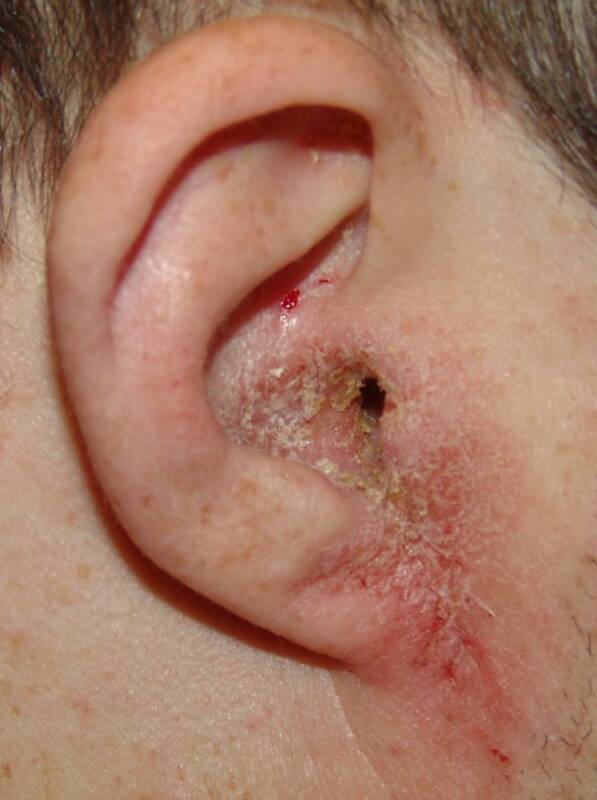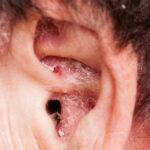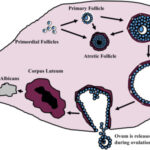Otitis externa seborrhea refers to inflammation of the external ear canal caused by seborrheic dermatitis. This chronic, relapsing condition typically affects sebaceous gland-rich areas such as the scalp, face, and external auditory canal. When seborrheic dermatitis extends to the ears, it leads to symptoms resembling otitis externa — including scaling, erythema, itching, and sometimes secondary infection.
This condition often coexists with systemic dermatologic diseases and may present as a standalone chronic skin disorder confined to the ear.

Pathophysiology of Seborrheic Otitis Externa
Seborrheic dermatitis is linked to an abnormal inflammatory response to Malassezia yeast species that inhabit the skin’s surface. In genetically predisposed individuals, this leads to excessive sebum production and skin barrier dysfunction, triggering inflammation and flaking.
Clinical Features of Seborrheic Dermatitis in the Ear
Common Symptoms
- Itching (Pruritus): Often intense and persistent
- Dry, Flaky Skin: Yellowish or white greasy scales in the ear canal and pinna
- Erythema: Mild redness localized to the canal and auricle
- Wax Build-Up: Accumulation of flakes can mimic excessive cerumen
- Irritation with Devices: Discomfort with hearing aids or earbuds
- Mild Discharge: Sometimes mistaken for infection
Distinctive Characteristics
- Bilateral involvement
- Seasonal flare-ups (commonly worse in winter)
- Associated with dandruff or facial seborrhea
Causes and Risk Factors
Overgrowth of Malassezia Yeast
These lipophilic fungi are normal skin flora but proliferate excessively in seborrheic environments, disrupting immune homeostasis.
Genetic Predisposition
Patients often have a family history of seborrhea or related dermatoses.
Neurologic and Immunologic Conditions
Higher prevalence in individuals with:
- Parkinson’s disease
- HIV/AIDS
- Epilepsy
- Mood disorders
Environmental Triggers
- Cold, dry climates
- Stress
- Harsh hair or skincare products
- Poor hygiene
Diagnosis and Differential Diagnosis
Clinical Diagnosis
The diagnosis is primarily clinical, based on:
- Chronicity of symptoms
- Greasy scaling in the external canal
- Coexistence of seborrhea in scalp or facial areas
Differential Diagnoses
| Condition | Key Differentiators |
|---|---|
| Psoriasis | Silvery scales, sharply demarcated plaques |
| Contact Dermatitis | Reaction to allergens, more acute presentation |
| Atopic Dermatitis | More common in children, associated with asthma |
| Infectious Otitis Externa | Painful, purulent discharge, tenderness |
Treatment of Otitis Externa Seborrhea
General Management Guidelines
- Regular cleaning of the ear canal with care
- Avoidance of irritants and allergens
- Management of systemic seborrhea to reduce recurrence
Topical Antifungal Treatments
Clotrimazole or Ketoconazole Drops
Effectively reduce Malassezia colonization in the canal, alleviating inflammation and flaking.
Topical Corticosteroids
Low-Potency Steroids (e.g., Hydrocortisone 1%)
Control inflammation when used intermittently to avoid atrophy of canal skin.
Combined Preparations
Steroid-antifungal combinations (e.g., Betamethasone + Clotrimazole) are often effective for flare-ups.
Emollients and Moisturizers
Application of mineral oil, ceramide-based creams, or hypoallergenic emollients helps maintain skin hydration and reduce flaking.
Prevention and Long-Term Control
Lifestyle Modifications
- Limit use of headphones or hearing aids during flares
- Manage scalp seborrhea with antifungal shampoos
- Minimize stress and exposure to environmental extremes
Maintenance Therapy
- Intermittent antifungal applications
- Weekly gentle cleaning with non-irritating solutions
- Regular dermatology reviews in recurrent cases
Potential Complications
- Chronic Otitis Externa: Prolonged inflammation leading to narrowing of the ear canal
- Secondary Bacterial Infection: Due to frequent scratching or moisture retention
- Skin Atrophy: From overuse of potent corticosteroids
- Hearing Difficulty: From debris buildup or canal stenosis
Frequently Asked Questions:
Is seborrheic dermatitis in the ear contagious?
No. It is an inflammatory condition and not transmitted between individuals.
Can seborrheic otitis externa cause hearing loss?
Mild conductive hearing loss may occur due to canal blockage, but it’s usually reversible.
How often should I clean my ears if I have seborrhea?
Once or twice weekly with emollients or as directed by a healthcare provider. Avoid aggressive cleaning.
What shampoo should I use if I have ear seborrhea?
Use antifungal shampoos containing ketoconazole, selenium sulfide, or zinc pyrithione on the scalp.
Is it safe to use steroid drops long-term?
No. Use steroids for short durations under medical guidance to avoid thinning of the ear canal skin.
Otitis externa seborrhea is a chronic but manageable condition rooted in seborrheic dermatitis and fungal overgrowth within the ear canal. A combination of antifungal therapy, corticosteroids, emollient care, and lifestyle adjustments offers substantial relief and prevents recurrences. Long-term success lies in identifying triggers, maintaining consistent care, and managing systemic manifestations of seborrhea.

